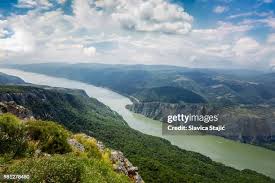The Danube River: A Lifeline of Europe

Introduction
The Danube River, Europe’s second-longest river, flows through ten countries, making it a crucial waterway for commerce and transport. Its significance extends beyond mere geography; it plays an essential role in the economies, ecologies, and cultures of the regions it traverses. In recent events, the river’s role has been highlighted in discussions about sustainable navigation and environmental protection, making it a highly relevant topic in today’s context.
Economic Importance
The Danube is a vital shipping route, facilitating the movement of goods and resources between Western and Eastern Europe. According to recent reports from the European Commission, approximately 60 million tons of cargo is transported along the river annually. Key ports such as Vienna, Budapest, and Belgrade serve as economic hubs, supporting international trade agreements across the continent. The European Union has invested in infrastructure to improve navigability and promote economic growth in the region, emphasizing the river’s role in European integration.
Environmental Concerns
Despite its importance, the Danube faces various environmental challenges, including pollution, invasive species, and habitat loss. The ongoing monitoring by international environmental agencies has revealed that biodiversity in the river is under threat due to industrial waste and agricultural runoff. Recent initiatives, such as the Danube River Protection Convention, aim to address these issues through cooperative management among the countries it flows through. Efforts to restore natural habitats and promote sustainable practices are increasingly emphasized by NGOs and governmental bodies.
Cultural Significance
The Danube is not only a physical feature; it holds immense cultural heritage. Historic cities along its banks boast rich histories and architectural landmarks, reflecting the diverse cultures that have flourished there for centuries. Events such as the annual Danube Carnival celebrate the river’s influence on art and tradition, drawing attention to its role as a cultural connector between nations. Music, literature, and folklore about the Danube have become integral to the regional identity of the countries it touches.
Conclusion
The Danube River is more than just a waterway; it is a lifeline that shapes economies, ecosystems, and cultures across Europe. As climate change and economic pressures continue to pose challenges, the need for sustainable practices and international cooperation is more evident than ever. Future collaborations among the Danube countries will be crucial in ensuring that the river remains a vital resource for generations to come, inspiring pride in its rich heritage while promoting environmental stewardship.









